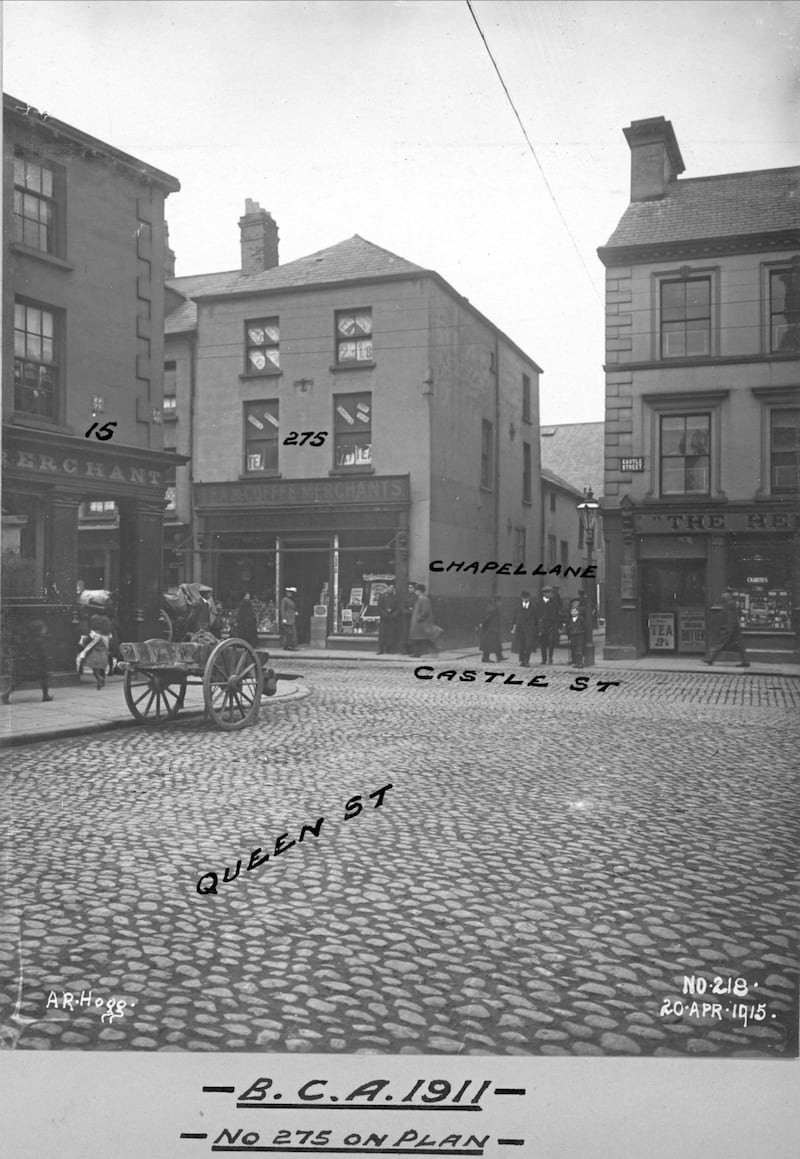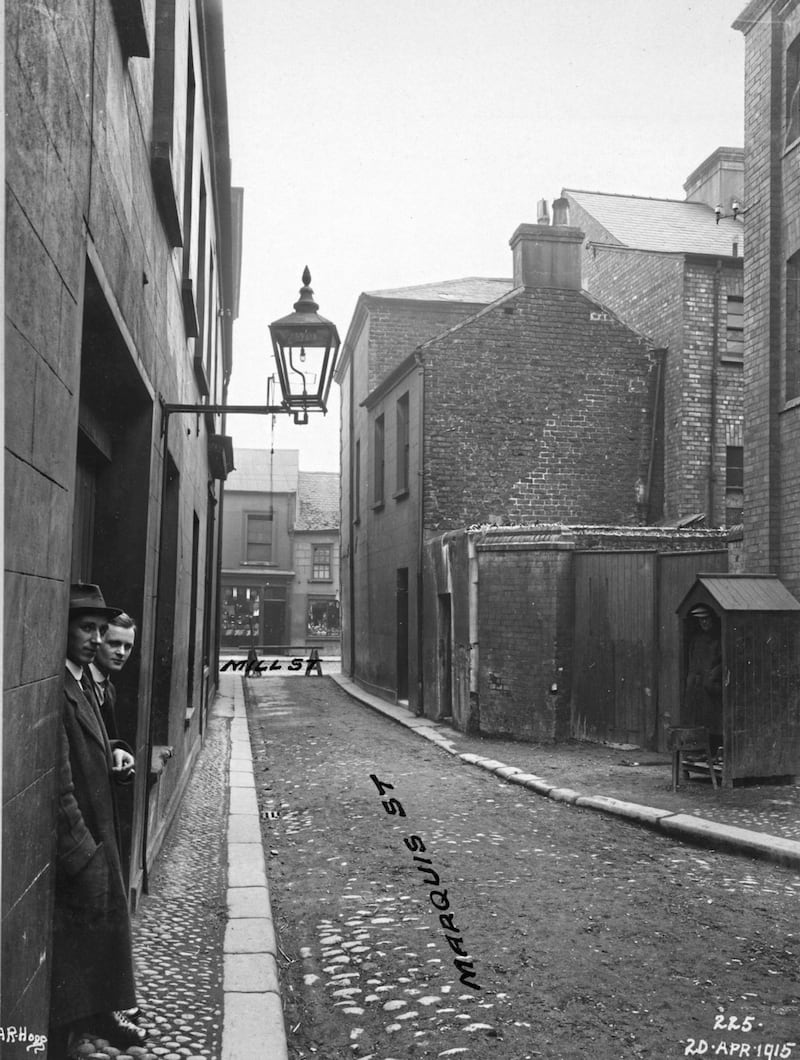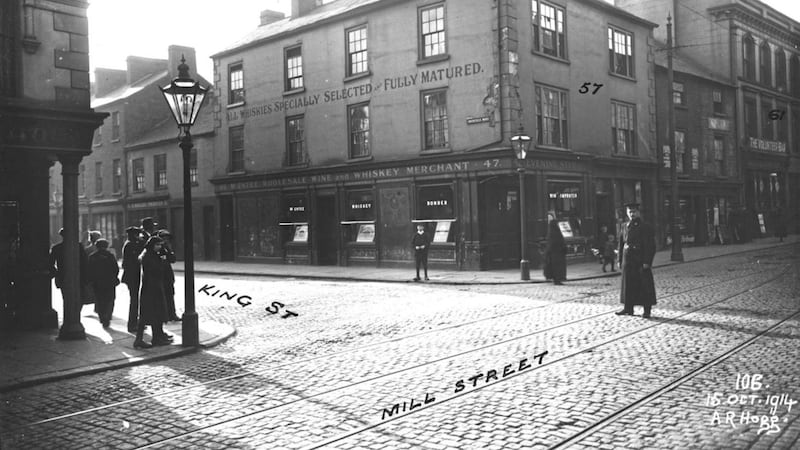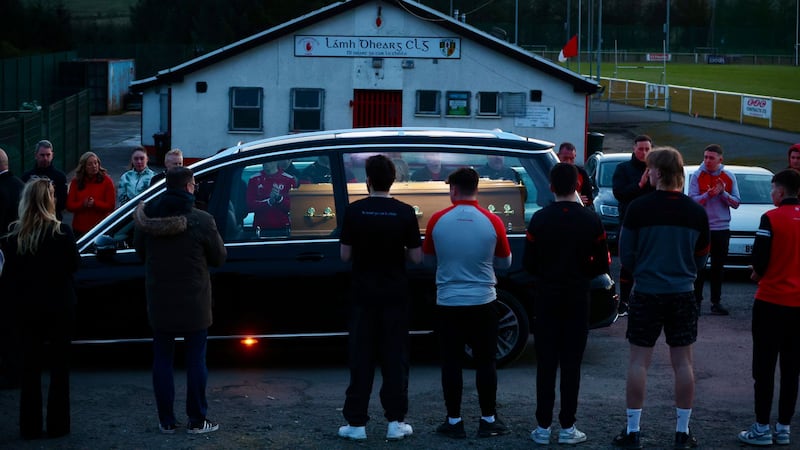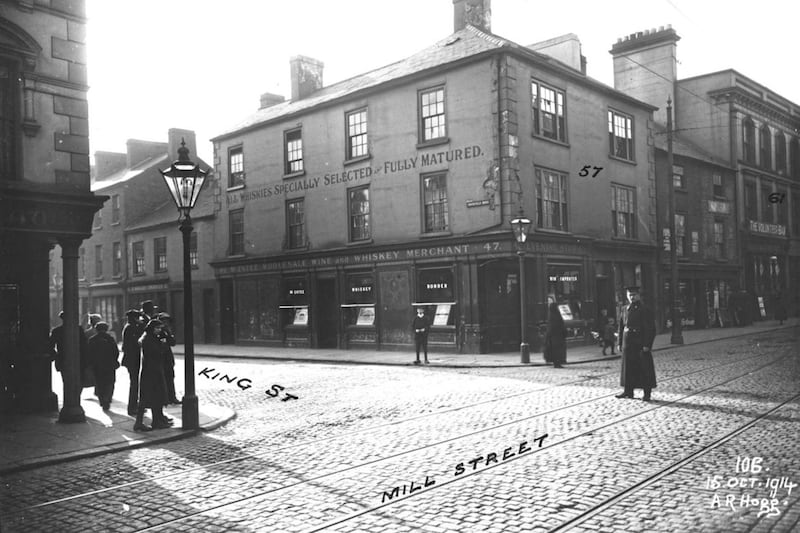A BOOKLET celebrating the history and heritage of one of Belfast's oldest districts is to be unveiled today.
The Folktown Heritage publication has been produced with the help of historian Dr Eamon Phoenix, who researched the area with its maze of narrow streets with names including Squeeze Gut Entry and Crooked Lane.
Many of the old buildings remain including Kelly's Cellars, Berry Street Presbyterian Church and the Hercules Bar.
The booklet forms part of an oral history project. An online audio archive will go live as part of the publication launch.
It is the result of months of interviews with those who lived and worked in the bustling Smithfield, King Street, Castle Street, Bank Street and Berry Street areas.
At today's launch, Dr Phoenix will share stories of the area, which was the focal point of the small Catholic population of Belfast in the 18th century.
"One of the most historic streets in the area is Chapel lane. Formerly known as Crooked Lane, this narrow street was the site of the town's first Catholic chapel, built by Protestant subscription in 1784 at the close of the penal era in Ireland," he said.
"Belfast in the 1780s was the most liberal town in Ireland with a reputation for radical politics and cross-community harmony. The local Presbyterians contributed more than half the cost of the building and the Irish Volunteers - Protestant to a man - turned out at the first Mass on 30 May 1784 in full uniform and presented arms as the priest entered the church.
"In his homily, the priest, Father Hugh O'Donnell declared that the friendship and generosity of the local Protestants was a mark of regard which should never be effaced."
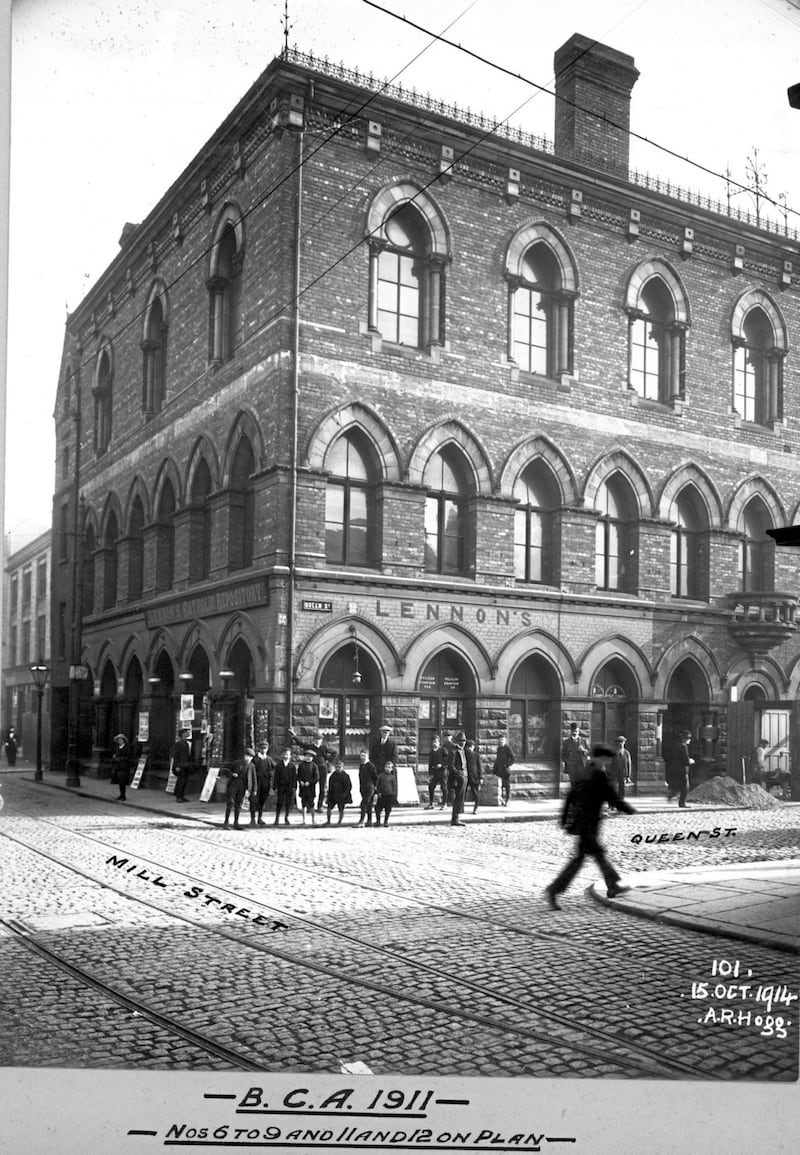
Folktown Community Interest Company director Sophie Rasmussen said the booklet would be of great interest to the public and be a valuable resource for schools.
"The aim of the project was to inform, entertain and educate the public about the hidden history of this area. We would not have been able to do it without support from the Heritage Lottery Fund," she said.
"This part of Belfast is undergoing a renaissance with the refurbishment of Bank Square, the opening of new restaurants and the building of a new boutique hotel. But I think the public will be interested in the lives of the people who lived here hundreds of years ago."
